#a reunion in britain
Text

Concept: Soma comes back to visit England after a while and processes his Grief in a healthy manner by rebuilding his support system, because he deserves the world and deserves to be happy.
Some of the other characters:
-Maurice
-Edward
-Elizabeth
-Joanne
-Cheslock
-Clayton
-Sieglinde
-some minor characters
#They deserve to process the things they have been through in a healthy manner#I still feel so horrible for him :(#kuroshitsuji#black butler#kuroshitsuji fanart#soma asman kadar#prince soma#somaasmankadar#sieglinde sullivan#elisabeth midford#elizabeth midford#lizzy midford#vio draws#a reunion in britain
210 notes
·
View notes
Text
I'm currently thinking about @unexpectederawhilesubmitting's post about the Time Loop Doctors, and as much I'm not 100% on board with how it was executed, or with what RTD's doing overall, I think I like this. I think I can live with this.
Because... who hasn't wanted to be Fifteen? Who hasn't wanted to go up to a past version of themselves and say "Hey, I know you. I see you. I love you. And I can promise that this will be better. This will pass, and things will be good again."
And who hasn't wanted to be Fourteen? Who hasn't wanted a future version of themselves from five, ten, twenty years in the future to hug them and say, "It's okay. It hurts, but it will be worth it. You will survive and you'll be better than ever. You will be brilliant, you will be fantastic, and everything will be okay."
Nobody is harder on the Doctor than himself. And honest to god I think hearing from himself that it's going to be okay is what helps heal him. Even if he forgets it on the surface (because Time Lords can't remember meeting themselves), I like to think that gives him a deep-set comfort, a bone-clenching feeling of peace, that allows him to move on.
#dw thoughts#doctor who#the doctor#i'm thinking about this right now and why am i nearly crying#I AM NOT EVEN REALLY INVESTED IN THIS#but just#PLEASE let my child know peace#PLEASE let them feel loved#please dear god#please let them feel rested#they deserve it#also rtd i SWEAR TO GOD#IF YOU DO NOT MAKE HIS REUNION WITH THE MASTER AS HOMOEROTIC AS POSSIBLE#IF YOU DO NOT MAKE THEM *FUCKING KISS*#I WILL HOP A TRAIN TO BRITAIN#(YES A TRAIN ACROSS THE OCEAN)#AND I WILL FOLLOW YOU AROUND HOLLERING INCESSANTLY IN YOUR EAR#once again: i am genuinely not that invested 😭#i just have Opinions™ about Certain Things™
6 notes
·
View notes
Text
Our fav gamer...Rachel Summers
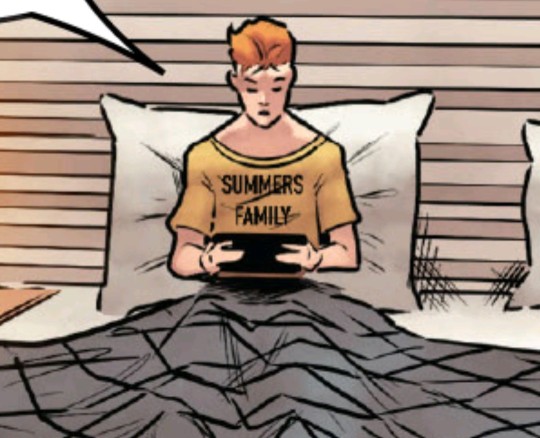
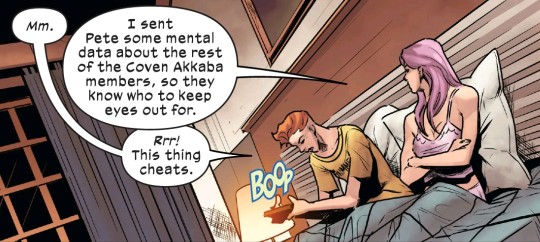
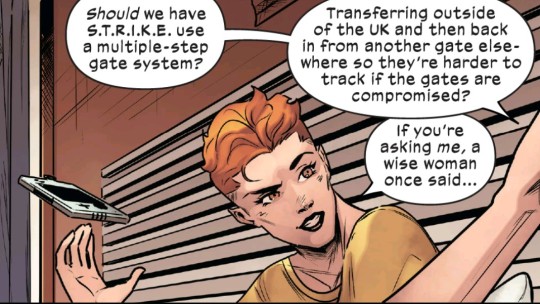
#marvel#marvel comics#x men#x men comics#betsy braddock captain britain#rachel summers#rachel grey#askani#prestige#betsy braddock#captain britain#summers family reunion#i want that shirt#also rachel rage quits#me too girl
6 notes
·
View notes
Text

Story from the Washington Post here, non-paywall version here.
Washington Post stop blocking linksharing and shit challenge.
"The young woman was catatonic, stuck at the nurses’ station — unmoving, unblinking and unknowing of where or who she was.
Her name was April Burrell.
Before she became a patient, April had been an outgoing, straight-A student majoring in accounting at the University of Maryland Eastern Shore. But after a traumatic event when she was 21, April suddenly developed psychosis and became lost in a constant state of visual and auditory hallucinations. The former high school valedictorian could no longer communicate, bathe or take care of herself.
April was diagnosed with a severe form of schizophrenia, an often devastating mental illness that affects approximately 1 percent of the global population and can drastically impair how patients behave and perceive reality.
“She was the first person I ever saw as a patient,” said Sander Markx, director of precision psychiatry at Columbia University, who was still a medical student in 2000 when he first encountered April. “She is, to this day, the sickest patient I’ve ever seen.” ...
It would be nearly two decades before their paths crossed again. But in 2018, another chance encounter led to several medical discoveries...
Markx and his colleagues discovered that although April’s illness was clinically indistinguishable from schizophrenia, she also had lupus, an underlying and treatable autoimmune condition that was attacking her brain.
After months of targeted treatments [for lupus] — and more than two decades trapped in her mind — April woke up.
The awakening of April — and the successful treatment of other people with similar conditions — now stand to transform care for some of psychiatry’s sickest patients, many of whom are languishing in mental institutions.
Researchers working with the New York state mental health-care system have identified about 200 patients with autoimmune diseases, some institutionalized for years, who may be helped by the discovery.
And scientists around the world, including Germany and Britain, are conducting similar research, finding that underlying autoimmune and inflammatory processes may be more common in patients with a variety of psychiatric syndromes than previously believed.
Although the current research probably will help only a small subset of patients, the impact of the work is already beginning to reshape the practice of psychiatry and the way many cases of mental illness are diagnosed and treated.
“These are the forgotten souls,” said Markx. “We’re not just improving the lives of these people, but we’re bringing them back from a place that I didn’t think they could come back from.” ...
Waking up after two decades
The medical team set to work counteracting April’s rampaging immune system and started April on an intensive immunotherapy treatment for neuropsychiatric lupus...
The regimen is grueling, requiring a month-long break between each of the six rounds to allow the immune system to recover. But April started showing signs of improvement almost immediately...
A joyful reunion
“I’ve always wanted my sister to get back to who she was,” Guy Burrell said.
In 2020, April was deemed mentally competent to discharge herself from the psychiatric hospital where she had lived for nearly two decades, and she moved to a rehabilitation center...
Because of visiting restrictions related to covid, the family’s face-to-face reunion with April was delayed until last year. April’s brother, sister-in-law and their kids were finally able to visit her at a rehabilitation center, and the occasion was tearful and joyous.
“When she came in there, you would’ve thought she was a brand-new person,” Guy Burrell said. “She knew all of us, remembered different stuff from back when she was a child.” ...
The family felt as if they’d witnessed a miracle.
“She was hugging me, she was holding my hand,” Guy Burrell said. “You might as well have thrown a parade because we were so happy, because we hadn’t seen her like that in, like, forever.”
“It was like she came home,” Markx said. “We never thought that was possible.”
...After April’s unexpected recovery, the medical team put out an alert to the hospital system to identify any patients with antibody markers for autoimmune disease. A few months later, Anca Askanase, a rheumatologist and director of the Columbia Lupus Center,who had been on April’s treatment team, approached Markx. “I think we found our girl,” she said.
Bringing back Devine
When Devine Cruz was 9, she began to hear voices. At first, the voices fought with one another. But as she grew older, the voices would talk about her, [and over the years, things got worse].
For more than a decade, the young woman moved in and out of hospitals for treatment. Her symptoms included visual and auditory hallucinations, as well as delusions that prevented her from living a normal life.
Devine was eventually diagnosed with schizoaffective disorder, which can result in symptoms of both schizophrenia and bipolar disorder. She also was diagnosed with intellectual disability.
She was on a laundry list of drugs — two antipsychotic medications, lithium, clonazepam, Ativan and benztropine — that came with a litany of side effects but didn’t resolve all her symptoms...
She also had lupus, which she had been diagnosed with when she was about 14, although doctors had never made a connection between the disease and her mental health...
Last August, the medical team prescribed monthly immunosuppressive infusions of corticosteroids and chemotherapy drugs, a regime similar to what April had been given a few years prior. By October, there were already dramatic signs of improvement.
“She was like ‘Yeah, I gotta go,’” Markx said. “‘Like, I’ve been missing out.’”
After several treatments, Devine began developing awareness that the voices in her head were different from real voices, a sign that she was reconnecting with reality. She finished her sixth and final round of infusions in January.
In March, she was well enough to meet with a reporter. “I feel like I’m already better,” Devine said during a conversation in Markx’s office at the New York State Psychiatric Institute, where she was treated. “I feel myself being a person that I was supposed to be my whole entire life.” ...
Her recovery is remarkable for several reasons, her doctors said. The voices and visions have stopped. And she no longer meets the diagnostic criteria for either schizoaffective disorder or intellectual disability, Markx said...
Today, Devine lives with her mother and is leading a more active and engaged life. She helps her mother cook, goes to the grocery store and navigates public transportation to keep her appointments. She is even babysitting her siblings’ young children — listening to music, taking them to the park or watching “Frozen 2” — responsibilities her family never would have entrusted her with before her recovery.
Expanding the search for more patients
While it is likely that only a subset of people diagnosed with schizophrenia and psychotic disorders have an underlying autoimmune condition, Markx and other doctors believe there are probably many more patients whose psychiatric conditions are caused or exacerbated by autoimmune issues...
The cases of April and Devine also helped inspire the development of the SNF Center for Precision Psychiatry and Mental Health at Columbia, which was named for the Stavros Niarchos Foundation, which awarded it a $75 million grant in April. The goal of the center is to develop new treatments based on specific genetic and autoimmune causes of psychiatric illness, said Joseph Gogos, co-director of the SNF Center.
Markx said he has begun care and treatment on about 40 patients since the SNF Center opened. The SNF Center is working with the New York State Office of Mental Health, which oversees one of the largest public mental health systems in America, to conduct whole genome sequencing and autoimmunity screening on inpatients at long-term facilities.
For “the most disabled, the sickest of the sick, even if we can help just a small fraction of them, by doing these detailed analyses, that’s worth something,” said Thomas Smith, chief medical officer for the New York State Office of Mental Health. “You’re helping save someone’s life, get them out of the hospital, have them live in the community, go home.”
Discussions are underway to extend the search to the 20,000 outpatients in the New York state system as well. Serious psychiatric disorders, like schizophrenia, are more likely to be undertreated in underprivileged groups. And autoimmune disorders like lupus disproportionately affect women and people of color with more severity.
Changing psychiatric care
How many people ultimately will be helped by the research remains a subject of debate in the scientific community. But the research has spurred excitement about the potential to better understand what is going on in the brain during serious mental illness...
Emerging research has implicated inflammation and immunological dysfunction as potential players in a variety of neuropsychiatric conditions, including schizophrenia, depression and autism.
“It opens new treatment possibilities to patients that used to be treated very differently,” said Ludger Tebartz van Elst, a professor of psychiatry and psychotherapy at University Medical Clinic Freiburg in Germany.
In one study, published last year in Molecular Psychiatry, Tebartz van Elst and his colleagues identified 91 psychiatric patients with suspected autoimmune diseases, and reported that immunotherapies benefited the majority of them.
Belinda Lennox, head of the psychiatry department at the University of Oxford, is enrolling patients in clinical trials to test the effectiveness of immunotherapy for autoimmune psychosis patients.
As a result of the research, screenings for immunological markers in psychotic patients are already routine in Germany, where psychiatrists regularly collect samples from cerebrospinal fluid.
Markx is also doing similar screening with his patients. He believes highly sensitive and inexpensive blood tests to detect different antibodies should become part of the standard screening protocol for psychosis.
Also on the horizon: more targeted immunotherapy rather than current “sledgehammer approaches” that suppress the immune system on a broad level, said George Yancopoulos, the co-founder and president of the pharmaceutical company Regeneron.
“I think we’re at the dawn of a new era. This is just the beginning,” said Yancopoulos."
-via The Washington Post, June 1, 2023
#mental illness#schizophrenia#schizoaffective#psychotic disorders#psychology#neurology#autoimmune#autoimmine disease#neuroscience#medical news#medical research#catatonia#immunotherapy#immune system#clinical trials#good news#hope
6K notes
·
View notes
Text
A Wartime Reunion at Goodwill House (Goodwill House #5) by Fenella J. Miller #WorldWarII #NetGalley #ARCReview
I was so excited to get the ARC of the next book in the #GoodwillHouse series from #NetGalley. I've discovered a fabulous #WWII fiction series by #FenellaJMiller that I don't want to end. #NewBooks #March2023Release #BookReview #ARCReview #WorldWarII
With harvest approaching, land girl Daphne is busier than ever as she ploughs the fields and tends to the animals with her friends Sal and Charlie. All three girls enjoy the relative peace of Goodwill House…but war is never far away.
When a German plane crash lands in the grounds of Goodwill House, everyone is shocked, especially when the two German pilots are declared missing. Where could they…

View On WordPress
#A Wartime Reunion at Goodwill House#Advanced Reader&039;s Copy#ARC Review#Duty Calls at Goodwill House#Fenella J. Miller#German Bombers#Goodwill House#Great Britain#NetGalley#New Recruits at Goodwill House#The Land Girls of Goodwill House#The War Girls of Goodwill House#World War 2#World War II#WWII
0 notes
Text
Of Cats, Artists and Small Towns
By CosmicCthulhu
After the war, Draco moves into a small quaint muggle village – with nothing but his art supplies and the scars he gathered through the years – hoping to find some inner peace. And maybe he’d be able to do just that if it wasn’t for a pesky orange cat and a beautiful muse that refused to leave his mind.
[Link]
0 notes
Text
Top 10 Most Favourited (Completed) Fics on FFNET of 2023:
Wilted Rose and Muddy Blood: A Dramione Fic by Raptor.Elephant - M, 25 chapters, Words: 34,001 - Lavender Brown makes a bet with Hermione that she can't win over the Slytherin Prince in a month. Hermione wonders why she agreed... she could never stand a chance of winning, right? Rated for minor adult themes and language. R&R. COMPLETE... FINALLY!
The Education of a Lady by thewanderers'wanderingdaughter - M, 34 chapters, Words: 365,605 - COMPLETE. Fourth and final (for real this time) part in the His Little Bird series. The story of survival, betrayal, and tragedy. A monster took everything from her. Now she's expected to be a willing participant in the world he's built for them. They want her to become one of them. She only wants vengeance, and now that she has her power back, she can make that a reality.
If Only by SarahFraser - M, 25 chapters, Words: 99,891 - Fourteen years after Draco and Hermione break up, Draco accompanies his son, Scorpius, to Kings Cross for his first year at Hogwarts. Thirteen-year-old twins, Mila and Milo, get their first in person glimpse of the father that abandoned them before birth. After Mila confronts her father for abandoning them, Draco seeks Hermione out on the platform to find out what the hell is going
I'm a What? He's My What? Well Hell! by clumsydolphin - T, 18 chapters, Words: 34,168 - This is a very unusual Veela tale! I promise if ya peek inside it's a surprise! Now complete!
Blackmailed by Mistress Lynn - M, 14 chapters, Words: 49.867 - Draco finds out something pertaining to the war that Hermione would do anything to prevent from getting out. How far is she willing to go to protect her secret? DM/HG, Draco M./Hermione G. 7th Year Hogwarts, war AU, Dramione, lots of banter! COMPLETE! WINNER: 2022 Top Dramione Fics on Reddit, 2nd Place Dom!Draco (but he's totally a switch here)
Mother: Unknown by HufflepuffMommy - M, 42 chapters, Words: 108,211 - After the battle, Draco Malfoy was given something he never thought he wanted—a daughter. The only problem? He didn't know who the mother of his child was. Six years after the war, Hermione Granger moves to the states, to a small coastal town in Maine. There, she runs into a familiar wizard—along with his outgoing, precious daughter. NOW COMPLETE!
Fireworks by cleotheo - T, 10 chapters, Words: 25,510 - A party at the end of seventh year results in major life changes for Harry Potter and Hermione Granger, including the loss of their best friend, Ron Weasley. Can a reunion several years later fix the rift, or are some things too broken to ever be fixed? Reunion style story.
Old Friends by cleotheo - T, 10 chapters, Words: 25,453 - When Ron Weasley returns to Wizarding Britain after five years away he is dismayed to find his place in life seems to have been usurped by a certain former Slytherin. But how far will Ron go to get back the life, and the witch, he believes should be his?
Teach Me How to Forget by scullymurphy - M, 20 chapters, Words: 110,321 - Hermione Granger is 27 years old when her life falls apart. Cheated-on, flatless, in a dead end job, she decides to change one thing she can-take a class and try for some career advancement. But change is never easy, especially when an old enemy is the catalyst-and the class instructor.
Designations by sbz0702 - M, 35 chapters, Words: 85,293 - In the aftermath of the Battle of Hogwarts and the end of the Wizarding War, all Seventh- and Eighth-Year students are required to return to Hogwarts to complete their magical educations. When they arrive, they discover that the Ministry has been tampering with nature and biology...and they've all been affected... EWE, non-Canon compliant
270 notes
·
View notes
Text
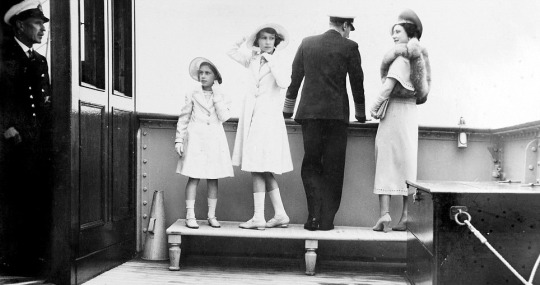
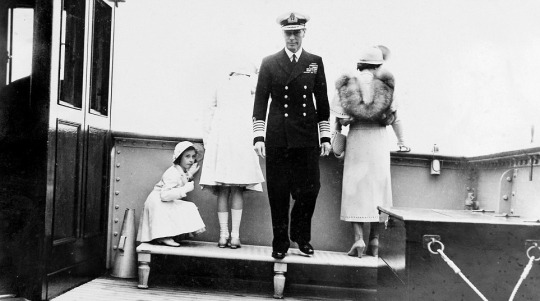
June 22, 1939: The Royal Family on board the Empress of Britain. The liner brought the King and Queen home after their successful tour of Canada & the USA and was the site of their happy reunion with the Princesses. Photos by Leslie Willoughby
103 notes
·
View notes
Text
Comments by Peter Dogget (author of You Never Give Me Your Money)
“Lennon could have abandoned the (US) immigration case and returned to Britain, and possibly even to McCartney, but that would have meant accepting that his relationship with Ono was over.”
"In the great tradition of pantomime dames, Lennon played the leading female role of Thisbe, which allowed him some highly camp flirtation with Paul ‘Pyramus’ McCartney."
"Literary parody was still Lennon’s inspiration in this brief ‘story’, which according to the credits in In His Own Write was written “in conjugal with Paul”
"What happened at the Dakota in January 1975? Various biographers have suggested that Ono might have drugged Lennon or hypnotized him, or used her esoteric knowledge of witchcraft. But these far-fetched rumors underestimate the power of Lennon’s psychological drives. More intriguing, in retrospect, is Ono’s rationale. Did she choose this moment for a reunion because the numbers were right, or was she afraid that she might lose him forever if he reunited with McCartney? Whose dependence was greater: Lennon’s on the woman he called mother, or Ono’s on the man who had brought her global recognition?
"(Paul’s Life interview, November 1969): “’The Beatle thing is over. It has been exploded, partly by what we have done, partly by other people. We are individuals – all different. John married Yoko, I married Linda. We didn’t marry the same girl.’ It was an intriguing way to describe the break-up, deflecting his disagreements with Lennon onto the choice of partners.”
"In mid-January 1973 Lennon and Ono quarrelled publicly at another party. “I wish I was back with Paul,” Lennon reportedly said."
“Seeing Lennon focus on Ono rather than him[Paul] was as devastating as it would have been for Cynthia Lennon to witness the couple making love.”
“His partnership with Lennon was non-sexual, but it ran deeper than anything he had experienced with a woman”.
96 notes
·
View notes
Text

I can't post Edward without posting his awesome sister, so here she is!!!
Some of the other characters:
-Soma (the origin of this concept)
-Maurice
-Edward
-Joanne (ELIZAN- *gets shot*)
-Cheslock
-Clayton
-Sieglinde
-some minor characters
#SHEEEEEE#kuroshitsuji#black butler#kuroshitsuji fanart#elisabeth midford#elizabeth midford#lizzy midford#a reunion in britain#vio draws
73 notes
·
View notes
Text

Fic Recs Wrap Up December 2023 ଘ(੭ˊᵕˋ)੭* ੈ✩‧₊˚・*:.。.♡⑅୨୧̩̩̩̥✼• .。.:*・゜゚・*☆
All Things Go by iota @sorrybutblog
Draco’s back at Hogwarts by court order. Harry’s back for no particular reason at all. Some things change, some stay the same. Neither expects to spend eighth-year living in close quarters, playing rugby (poorly), staying up late, sneaking around, and finally figuring it all out. Rec Post
The Inconvenient Death(s) of Harry Potter by nv-md (ANW815) @nv-md
Harry and Draco have spent the decade since the War avoiding each other, even as they’re forced to work together at the Ministry and their friend groups begin to alarmingly overlap. But what happens when Harry meets a tragic end (in a manner of speaking) and Draco’s the only one who can save him?
Or Harry won’t stop dying, Draco’s had too much coffee, and there’s more than enough time for them to make a mess of each other’s lives. Rec Post
Constellations on your skin by shushu_yaoi_lj @orange-peony
“I’m going to get my scars removed,” Draco announces on a rainy Wednesday afternoon.
“Who are you seeing?” Blaise asks.
“The best Healer out there,” Draco replies with a little shrug. “Harry Potter.” Rec Post
and the world is tumbling down by thewakeless @thewakeless
Draco is thirty-five and content. He’s a writer, a painter, and has built a life for himself totally separate from the one he envisioned as a sullen, fearful boy at Hogwarts. Everything is calm—until his house begins trying to kill him. Rec Post
The Cursed Manor by AhaMarimbas @mars-bar81
Ophelia’s been a paranormal investigator for almost ten years, and she’s starting to run out of haunted and cursed sites to explore. When her eclectic roommate and assistant reveals that he owns a large, cursed Manor, Ophelia finds a lot more than just a new career opportunity. Rec Post
The Unknown Door by waterwings @amywaterwings
There is something wrong with the Bellcrest. The heart of the place beats rotten. Everyone says so.
Where Draco is a magical property manager, Harry is a recluse, and they’re definitely not hiding from their problems in the run-down flats of the Bellcrest. Not at all. Not one bit. Rec Post
Keep Your Brittle Heart Warm by flightinflame @flightinflame
Eighth-year offers Draco a brief respite before he returns to Azkaban. With a restricted wand, and memories of a girl who shouldn’t exist, he has very little hope for the future. But when Harry brings Teddy into the school, and proves to be utterly clueless, things change beyond anything he could imagine. Rec Post
Historians by oknowkiss @oknowkiss
It’s the Dumbledore’s Army Reunion Holiday, and Harry’s found himself in hot water with his friends once again, after telling them he has a boyfriend he definitely does not have. In an attempt to fix things, he’s made it his colleague on Level Nine, Draco Malfoy’s problem too. Featuring a ski chalet in Switzerland, a pair of bunk beds, and an agreement that should’ve been simple, were it not for all the bloody feelings getting in the way. Rec Post
Here are a few more fics I've read recently that y'all might like to check out as well!(ノ゚∀゚)ノ━☆゚・*:.。. .。.:*・.*・。゚*:・゚✧

Draco's First Holiday by Meowfoy @resilientkitteh
Draco catches Blaise cheating, breaks up with him and decides to leave his French Villa behind to swap houses with a woman named Hermione and her husband Ron. His relaxing vacation becomes far more interesting when a handsome stranger (Harry) knocks at his door in the middle of the night. They meet and get to know each other, and suddenly Draco feels much better about his decision to leave France behind for Britain.
Englishman Extraordinaire by BlueSundayCake @bluesundaycake
When Draco's life goes to shit, he gets scammed. Maybe it's for the best. Who doesn't love new beginnings?
Letters by CoffeeDragon87 @coffeedragon87
When Harry Potter turned eleven he received a letter that changed his life forever. When Harry Potter, now a dashingly handsome bachelor, Head of the Auror Department and loving godfather, is thirty-five history repeats itself.
With and Without You by Shewhxmustnxtbenamed @shewhomustnotbenamed
Harry and Draco realize that they’ve been living in the same building for the past five years, hiding from the Wizarding world in Muggle London for a variety of reasons. They grow unexpectedly close and Harry realizes that Draco’s relationship with his boyfriend is abusive, spiraling as he tries and fails to figure out how to help. In Harry’s rejection of the Wizarding world in general, he has fallen out of touch with his friends and his magical abilities, but has to reconnect with both in order to find himself again.
( •ॢ◡-ॢ)-♡ I hope you enjoy these fics as much as I have! Happy reading, y’all & I hope 2024 is good to you! Happy New Year! xoxo Carey (◍•ᴗ•◍)♡ ✧*💜💙💚💛❤💗💕💖

#Fic recs wrap up December 2023#Fic Recs Wrap Up#Drarry Fic Recs#drarry#Fic Recs#hp Fic Recs#harry potter#draco malfoy#hp#Harry Potter fic recs#long post#Drarry fanfiction#Harry Potter Fanfiction#drarry fic#hp fanfiction#drarry fanart#hp fic#hp fanart#drarry smut#smut#hp smut#harry potter fanfic#harry potter fic#hp fanfic#Hd Career fair 2023#Hd Erised 2022#lights camera Drarry 2022#drarry squad#Carey's Bookmark fic recs#Carey's personal Bookmarks
88 notes
·
View notes
Text
Black Wings at Midnight
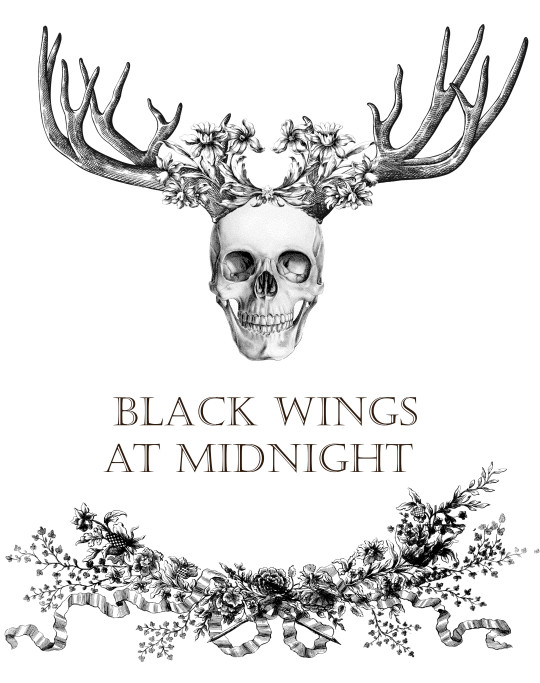
Shyly sharing my first Hannibal fanfic: a reimagining of Seasons 1-3 set during World War II in Britain. It comes complete with vintage-style illustrations and links to suggested listening (ranging from Handel to 1940s' swing).
See below for the summary, and under the cut for an extract.
When former detective Will Graham is pulled away from his intelligence work at Bletchley Park in 1942, to consult on a hauntingly familiar crime scene, he feels alive for the first time in years. But when his life begins falling apart, he finds himself thrown into a complex dance of trust and suspicion with the man assigned to help him: an aristocratic Lithuanian flying ace and peacetime psychiatrist, whose intentions are anything but clear…
If you do decide to give it a read, I hope you enjoy it, and would love it if you took the time to leave a comment. Hearing people's expectations and thoughts as they read has been the most enjoyable part of sharing this online. Thank you all, and sending hugs from London.
From Black Wings at Midnight: Chapter 3
‘May I come in?’
The voice is deep, with a warm lilt of an Eastern European accent. Crawford’s eyes brighten and he rises from the desk with what Will considers unseemly haste.
‘Aha! Now here’s a familiar face. Come in, come in, old chap. Pull up a chair. This is Will Graham, who I mentioned on the phone. Brilliant mind. Brilliant.’
Will scowls at the praise and turns in his chair, prepared to be combative. He has no great love for the airmen of the RAF. They are nothing more than overgrown public schoolboys, with their chummy nicknames and their maverick flair. In their presence, Will feels his carapace stripped away, exposed as an awkward provincial with a clumsy accent, a different breed from these sauntering gods of the sky.
The newcomer does little to dispel his prejudices. The flattering RAF uniform makes most men look good, but this fellow seems to have stepped straight out of an advertisement. J.C. Leyendecker in the flesh, Will thinks bitterly, feeling short, and dark, and rustic.
Nothing about this man is rustic: dark blond hair parted with almost surgical precision; a broad chest and shoulders beneath the blazon of the RAF wings; trousers ironed to crisp perfection; tie perfectly centred. Everything about him screams money, from the scent of his cologne to the small gold signet ring just visible on his little finger.
After spending long hours digging into the minds of the Nazi commanders, Will can’t resist a snort. Good God, how they would love you!
Light brown eyes linger on Will for a moment, already looking amused.
‘Good afternoon, Mr Graham. I apologise for interrupting your colloquy, but Jack is an old friend. I was delighted to hear he was visiting us. May I?’ He gestures to the unused chair before the desk and Will raises a shoulder minutely, neither inviting nor repelling. He settles for glaring across at Jack. He doesn’t wish to spend any longer here than necessary, and he certainly doesn’t want to play third wheel to some back-slapping reunion.
‘Will,’ says Jack, ‘this is Flight Lieutenant Hannibal Lecter – or should I say Dr Lecter?’ The two men exchange a twinkle of camaraderie and Will stifles a desire to stab the table with his pencil. ‘We met before the war,’ Jack continues. ‘Dr Lecter has a private psychiatry practice on Harley Street, and helped us with a profile for the Bethnal Green Killer in ’38.’
Will remembers the case. It wasn’t long after he’d been signed off, still gathering together the shreds of himself in the nursing home. He allows himself a glance sideways.
‘Strange to swap the comforts of Harley Street for a wet field in Hampshire, Dr Lecter. Get tired of listening to rich old ladies?’
‘I “got” patriotic,’ Lecter says gently. ‘My country was invaded last year. Lithuania,’ he adds, for Will’s benefit. ‘I have not lived there for many years, but old affections still linger: a sense of duty, if you will. I learned to fly when I was younger’ – Of course you did, thinks Will bitterly – ‘so why not put my skills in the service of my adopted country?’
‘And he’s become quite the terror,’ Jack says cheerfully. ‘Give him a Spitfire and he’s absolutely fearless. They say Göring’s offered a bounty to anyone who brings him down.’ He dismisses Lecter’s gesture of modest denial and turns back to Will. ‘When I heard he was stationed here, I thought it’d be helpful to have his thoughts – and his support too, of course.’
‘Convenient,’ Will says under his breath, studying his fingers. He feels Lecter’s eyes lingering on him with something that’s uncomfortably close to satisfaction. For a moment he entertains himself, wondering whether he loathes fighter aces more or less than psychiatrists. It comes out as a balance. The airmen are more irritating, but he has bitter personal experience of his own with psychiatry.
‘Come now, Jack,’ Lecter says, ‘you are not being completely honest with Mr Graham.’ He leans a little closer, offering Will a lungful of his expensive cologne, and his voice drops, as though this is a secret to be shared between them. ‘Jack has asked me to have a few conversations with you before you start on this case. Just to help prepare your armour for the field of battle, as it were.’
Will’s eyes snap up to Jack Crawford, who has the grace to look embarrassed.
‘Will, I’ve read your files. It’s my job to make sure you’re fit for duty. I want to help you in any way I can.’
‘I don’t find it helpful to be covertly psychoanalysed!’
‘This is not psychoanalysis,’ Lecter says placidly into the awkward silence, ‘merely a common interest. You have nothing to fear, Mr Graham. Besides,’ he adds, straightening his cuffs, ‘I am not a psychoanalyst. Freud may have some interesting principles, and Jung has made many valuable insights into my field, but I do not ride under their banner. Biological psychiatry is very different from asking you to tell me your dreams.’ Dark eyes dart up and catch Will’s just as he makes the mistake of looking up. Something coils in the pit of his stomach. ‘Though I have no doubt your dreams must be a fascinating place.’ …
‘Just a conversation,’ Will hears himself say.
‘But of course.’ Lecter shrugs in a Gallic fashion. ‘And we can give dear Jack a good night’s sleep. Just a conversation or two among friends.’
‘Associates,’ Will snaps back. Lecter laughs as if he has said something delightful.
‘God forbid we should become friendly. Come with me to the mess, Mr Graham. Let’s get some tea.’
Will feels wrong-footed. He wants to prod; to offend; to get under Lecter’s skin and force him to feel even the faintest echo of Will’s crippling discomfort. He feels like a parcel passed from Jack to Lecter, a fragile curiosity to be wrapped in cotton wool and discussed in lowered voices. He feels lonely and patronised, and because, to his deep-seated disgust, he finds himself wanting Lecter to like him, Will lashes out.
‘I doubt we’ll be friends, Dr Lecter. I don’t find you that interesting.’
A hand falls on his shoulder. To Jack, frowning in his chair, it’ll look comradely, a way to show that no offence has been taken. To Will, the touch is unsettling: part warning, conveyed through the grip of fingers far stronger than he’d anticipated; and part protective caress. I don’t, Will repeats doggedly in his head, find you interesting.
‘Ah,’ Lecter says softly in his ear, ‘but you will.’
24 notes
·
View notes
Note
Have you played dgs? I didn't like dgs 1 very much but thought dgs 2 was the best game in the franchise (I've yet to play investigations). I think there's huge potential for dgs 3 someday.... dgs 3... reunion! And the Britain gang comes to Japan
I have played dgs. Dgs 1 I enjoyed a ton while playing because on a technical level it was just such a well made game. The animations the music the new mechanics... but looking back on it it was SO unnecessarily bloated that even though I really do need to do a second pass on dgs I'm really dreading it because it's a grind.
Dgs2 was overall MUCH better paces. I can never get into dgs as much as I am I to mainline just because I feel like the trilogy was so streamlined and efficient in its storytelling in a way the dgs games didn't manage to be. But even if it's a bit messy in areas what's there in dgs is REALLY good.
I think there's definitely a ton of directions a hypothetical dgs 3 could go but I think to really shine it would need to de escalate the stakes a bit and focus on really letting those interpersonal dynamics simmer.
25 notes
·
View notes
Text

HP Rec Fest, Day 8
Today’s prompt for @hprecfest was also a bit of a challenge on the Drarry side. I guess canon rewrites are the most popular type of “canon divergence”, as in Hogwarts fics retelling the books with the boys being sorted into different Houses or becoming friends early on. I don’t read those often so I thought why not go for a Voldemort Wins AU instead? I’m very much intrigued by this trope and would love to read more of it. I was tempted to scream once again about Frayach’s brilliant The Good Guys but I’ve already recced it in the past so here are two hidden gems that could use more love!
Day 8) A canon-divergence fic:
Drarry
We Are Legend by @vaysh11 (E, 38k)
Eighty years into the future, Voldemort won. Harry Potter is a renegade wizard, Portkeying Muggles out of London to Hogwarts, last sanctuary in a Britain ruled by the Dark Lord. On a mission he encounters a powerful phoenix Animagus fighting on the Death Eaters' side. He recognises Draco Malfoy whom he thought long dead. But the differences between them are perhaps even greater than before.
I found this gem thanks to @romaine2424 who insisted I should take a look and she was so so right because this fic is unlike anything I’ve read before. I’m beyond impressed by the vivid, grim dystopian world building combining moments of tension and loneliness. Draco’s character and fate are devastating but despite all the grief and heartbreak this fic is still tender and moving, so full of yearning and hope. This is one of those stories that catch you off guard as you go on but feels fresh and creative every time you revisit, something about pre-2010 works just hits differently!
Rare pair
Pigment by @wynnefic (Harry/Sirius, T, 5.7k)
Sirius makes a promise to Harry during the war. Three years later, he keeps his word.
As soon as I saw the prompt I knew I’d go for this fic. Whether in a romantic or platonic relationship, Harry & Sirius hit a particularly bittersweet spot for me because I so wanted them to have had more time with each other. I love to bury myself in canon divergence but while most of them are angsty and tense or just downright smutty, this shortfic became one of my fave comfort reads. Their dynamic is soft and healing, full of tender intimacy and sweet domestic bliss. Like the Drarry fic I mentioned above, this has a very sensitive combination of grief and hope and patient longing that makes their reunion so emotionally satisfying.
28 notes
·
View notes
Text
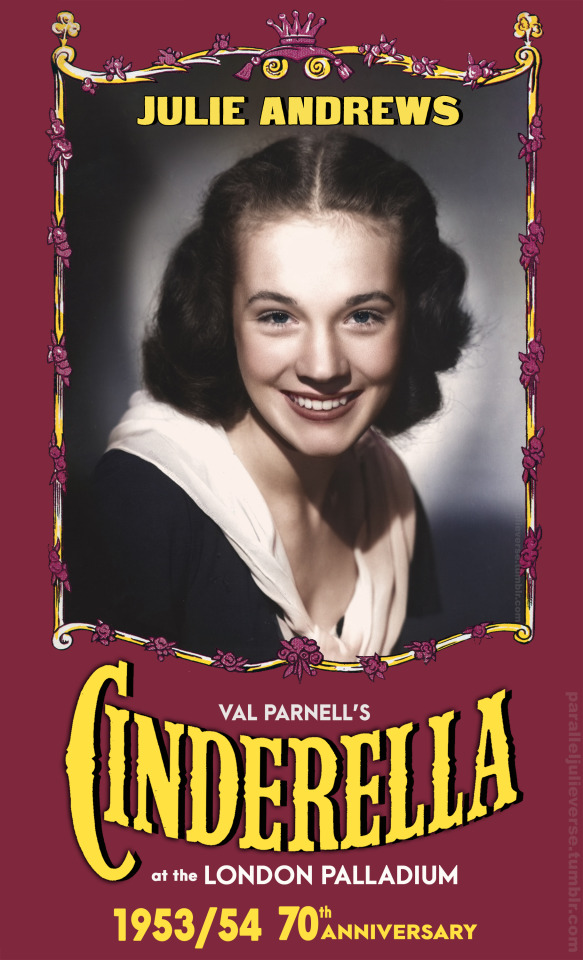
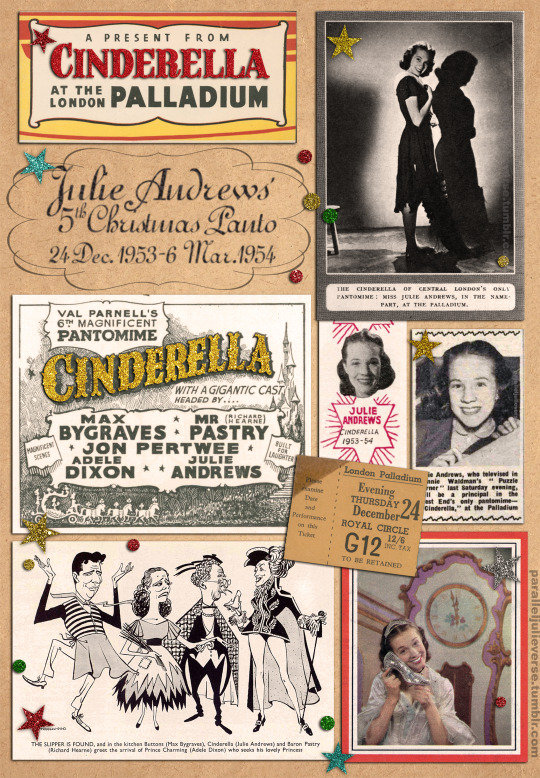
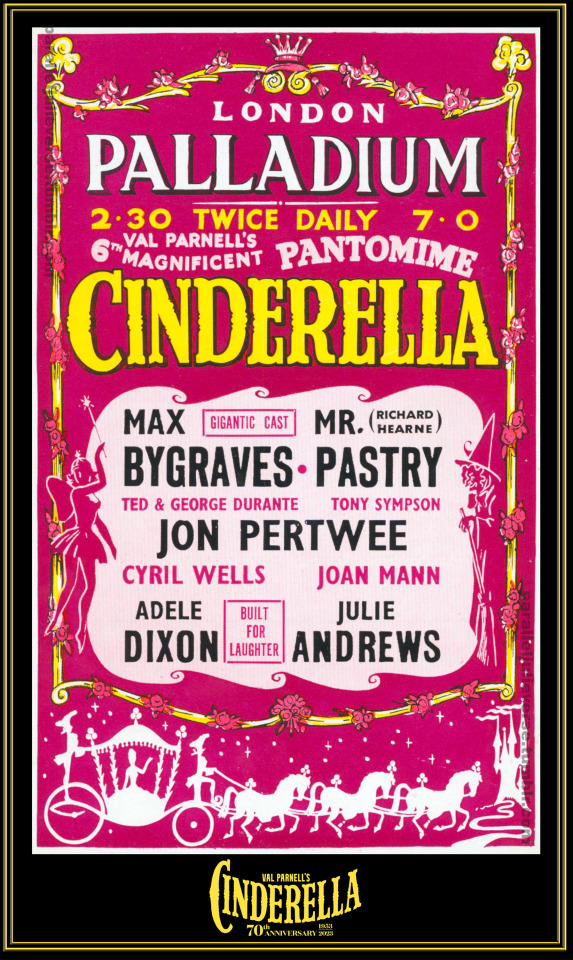

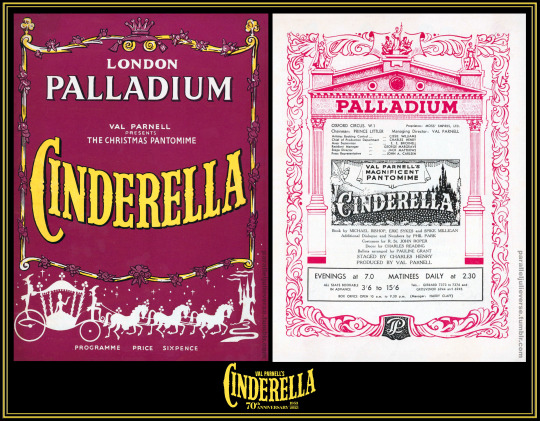

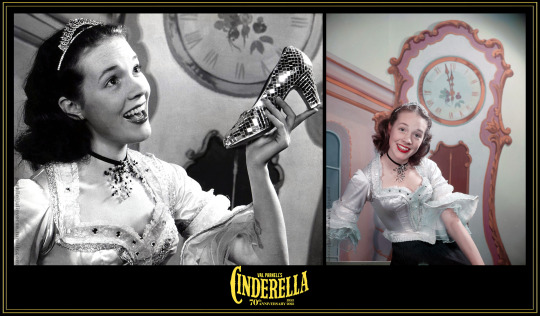

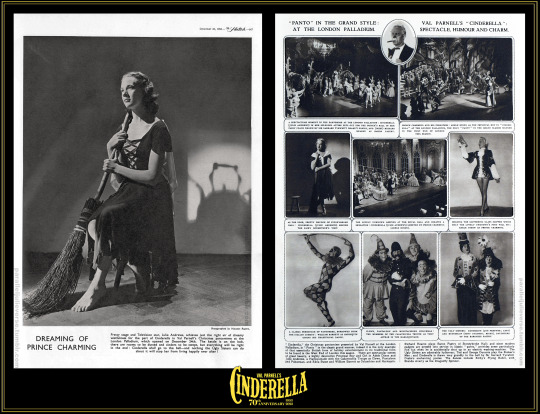




70th anniversary of Cinderella
London Palladium, 122 performances
(24 December 1953 - 6 March 1954)
This month marks the 70th anniversary of a milestone in the early career of Julie Andrews: the opening of Val Parnell's lavish Christmas pantomime, Cinderella, at the London Palladium on 24 December 1953.
Cinderella would be Julie’s fifth and final UK pantomime, following earlier runs in Humpty Dumpty (1948), Red Riding Hood (1950) Aladdin (1951), and Jack and the Beanstalk (1952). It was the biggest theatrical production Julie had yet undertaken and it would prove a turning point in the young star's career.
'No Pigtails for Julie'
By 1953, Julie was turning 18 and fast outgrowing the "infant prodigy" label of her early career. Efforts had been made for some time to update Julie's star image with a more mature look and an expanded musical repertoire. Much was made in the press about the new "[g]rown up now (or almost) Julie Andrews" (Bendle 1953: 2). "The tiny pigtailed schoolgirl who at age 13 sang in a Royal Command Performance," remarked one newspaper commentator, "is now a long-limbed attractive young lady who is wearing her first strapless dresses" (Pearce 1954: 6).
As an archetypal tale of girl-to-woman metamorphosis, Cinderella was an ideal vehicle with which to advance these transformative ambitions. It not only gave Julie titular 'principal girl' status, but called on her to assume a role of emotional nuance and adult sophistication.
Even Julie's mother, Barbara, is reported to have exclaimed:
“Julie, this is the perfect part for you at the perfect age. It couldn’t have come at a better time in your career" (Andrews 2008: 156-57).
Val Parnell presents...
Underscoring the significance of Cinderella was the fact it was a Val Parnell production. Dubbed 'Britain's Mr. Show Business', Parnell was a hugely influential impresario who dominated the British entertainment scene for many decades. He had started in provincial variety management before progressively rising up the ranks to assume control of the prestigious Moss Empires theatre chain (Bullar & Evans 1950: 219). Later, Parnell would go on to play a significant role in the expansion of the British television industry as General Manager of ATV, the first commercial television network in the United Kingdom (Sendall 1982: 250).
Renowned for his astute promotion of new talent, Parnell had been instrumental in launching Julie's career when he cast her in her first professional show at just 12 years of age: the now legendary Starlight Roof at the London Hippodrome in 1947/48 (Alldridge 1954: 1). Cinderella would bring the two together again for the first time in six years. To hear Parnell tell the story, it was a reunion long in the making.
"From the moment [I] first heard her sing," he declared, I "made a mental note that one day [I] was going to present Julie Andrews as Cinderella." As he explained:
"So many child performers are inclined to be precocious...But Julie was not. She had that appealing simplicity which she still retains. It struck me at the time that she had all the qualities of an ideal Cinderella -- youth. freshness, charm" (Lanchbery 1954: 1).
At the London Palladium
Of all the theatres managed by Parnell, none was more celebrated than the London Palladium, a 2200 seat theatre noted for its opulent architecture and state-of-the-art stage facilities (Woodward 2009). Parnell's adept leadership propelled the Palladium to international acclaim as the most famous variety theatre in the world and a top drawcard for international stars. "To appear at the Palladium is the goal to which every artist strives," noted a 1957 newspaper commentary, "to appear at the Palladium is to have achieved star status!" (Hoddinott 1957: 4).
The Palladium was also an important venue for Christmas pantomimes. Under Parnell, the Palladium "became the home of spectacular pantomime" with audiences eagerly anticipating each year's offering (Baker 2014: 219). Parnell applied the same triumphant formula to the humble British panto that he used in his variety revues: a blend of star power, spectacle, and money.
Writing in 1952, Ian Beven chronicled Parnell's studied approach to his annual pantomime at the Palladium:
"Each year...Parnell has tried to produce something bigger and better than the year before...He starts in midsummer, with a bare stage. By the third week in December, he has spent about £25,000 on scenery, costumes, musical arrangements, script, and rehearsals...Running costs of the show are high, as Parnell is prodigal with talent and fills his stage with people, and there are only about 140 performances on which to make a profit; but there is no disguising the fact that pantomime in this manner is a highly remunerative proposition, for there is rarely an empty seat throughout the run" (Seven 1952: 223).
Val Parnell's Magnificent 'Cinderella'
Cinderella would be Parnell's sixth pantomime at the Palladium. It would also be the only fully-staged panto in the West End for the 1953 Christmas season. In a sign of the rapidly changing post-war theatre scene, most of the other major London houses were tied up with long-running musicals and plays, largely imported from America. In addition, arena-style ice spectaculars were increasingly in vogue with a slew of new-fangled pantos "on ice" scheduled for suburban venues, leading some wags to quip that Parnell should call his show "Cinderella on Wood" ('Old fashioned Val' 1953: 6).
While many lamented it as a sign of "the decline and fall of the honoured institution" of the traditional panto, the absence of competition gave Parnell a distinct commercial advantage ('At the Pantomime', 1954: 4). When pre-sales for Cinderella opened in the autumn of 1953, the booking office was inundated and the show would become the theatre's most successful pantomime to date (Alldridge 1954: 4).
It also spoke to Parnell's innate sense of theatrical traditionalism. Though he was certainly not averse to innovation and was quick to adopt state-of-the-art technologies, Parnell was a producer of the old school. He believed in sticking to the tried-and-true and giving audiences what they expected. "Audiences haven't changed at all," he opined, "Certainly not the Palladium audiences. It's the same as it ever was. People go the the theatre to enjoy themselves...My job is to give it to them in bigger and better shows" (Hoddinott, 1957: 4)
True to this crowd-pleasing philosophy, Parnell determined to make Cinderella his most spectacular panto yet. Planning for the show started early in 1953. "I always start pantomime with a bare stage," he declared, "Everything must be new" (Fagence 1958: 4). Heading the production team were two influential figures who were something of righthand men to Parnell: Charles Henry and Charles Reading.
Henry was Chief of Production at the Moss Empire chain for over thirty years. During his tenure, he would produce over 200 revues and pantomimes, as well as fourteen Royal Command Performances (Born & Frame 1960: 4; 'Charles Henry' 1959: 1). Known as a canny talent-spotter with an encyclopaedic memory -- Bud Flanagan famously called him "a blinking card index of comedy" -- Henry was fondly remembered by Parnell at his passing in 1968 as "one of the theatre's greatest backroom boys" and "my closest associate" (Evening Standard Reporter 1968: 17).
Reading was an equally trusted majordomo for Parnell. A true theatre polymath, Reading trained as an actor before expanding into production, direction, writing, and design. It was the latter talent that brought Reading initial fame with a series of innovative opera and ballet designs for Sadler's Wells and the Old Vic. He subsequently moved into designing more commercial fare in the West End and, in 1947, was contracted by Parnell as resident designer and production assistant at the Palladium (Barker 199: 20; Vallance 199: 36).
Together Parnell, Henry, and Reading set about staging Cinderella as an unparalleled spectacular. Set and costume design alone was budgeted at over £20,000, which equates to almost £700,000 in today's money (Webster 2013). Reading designed an intricate series of progressively spectacular sets, including a palatial Ballroom, a Cave of Crystal Lustres, and a Palace of Porcelain for the grand finale (V&A 2015).
Famed stage couturier, Robert St John-Roper, designed a complementary suite of costumes including a dazzling ballgown and bejewelled wedding dress for Julie. In her 2008 memoir, Julie recalled the breathtaking splendour of it all:
"Everything about that 1953/1954 production of Cinderella had a certain elegance...The production values on the show were terrific; there were revolving stages, and real white ponies pulling the spectacularly gilded coach...In the grand finale wedding sequence, my crinoline was so huge that I had to arrive backstage dressed in my bodice, sleeves, and petticoat, and walk into the crinoline skirt, which was braced on a stand because it was so bejewelled and cumbersome. The company, Prince Charming, and I were brought up from below stage on a hydraulic elevator, to be revealed in a sparkling white set and costumes for the final tableau" (Andrews 2008: 155-57).
Spectacle, Humour, and Charm
Careful attention was equally paid to the other production elements of Cinderella to ensure a well-wrought work of quality theatrical entertainment. To write the script, Parnell commissioned a trio of talented young writers who were only then beginning to make a name for themselves but who would go on to become giants of British comedy: Eric Sykes, Spike Milligan, and Mike Bishop. Their original treatment hewed closely to the core elements of the well-known fairy story but embroidered with innovations and, true to panto style, comic flourishes.
In the Sykes et al script, the story opens with Baron Pastry of Stoneybroke Hall lamenting that he has fallen on hard times (Stoneybroke...get it?!). He lives with his beloved daughter, Cinderella, and their faithful but hopeless retainer, Buttons who carries an unrequited flame for Cinderella. The Baron announces he has just married a wealthy widow in the vain hope of restoring his fortune. She comes to the Hall with her two unloved and unlovable daughters -- the Ugly Stepsisters, of course -- and they set about making Cinderella's life a misery. The requisite Royal Ball, benevolent Fairy Godmother, and Glass Slipper hunt all ensue before the inevitable happily-ever-after ending (Sykes et al. 1953).
Woven around these well-worn plot points were a series of comic interludes designed to accomodate the pantomime conventions of audience participation and novelty acts. These ran the gamut from a demonic door and a bomb-toting spaceman ("it's behind you") to jive singing footmen and a giant electric washing machine that tumbled a hapless Baron Pastry along with an assortment of oversized clothes (Sykes et al. 1953).
Song and Dance
No pantomime would be complete without music and dance and Cinderella served both in abundance. Overseeing the musical side of things were another pair of Palladium panto stalwarts: Phil Park and Bobby Howell.
Park had been a star cinema organist during the picture palace era but, following the war, he turned his attention to composing and arranging. It was in this capacity that Park worked frequently for Parnell on his Palladium pantos which he "tailored to the stars appearing in the shows but always preserved the time-honoured tradition" ('Obituary: Phil Park' 1978: 6).
Bobby (aka Bobbie) Howell was a prominent band leader of the inter-war years, touring the cinema and dance circuits. After the Second World War, he became a musical director in the West End, working on a string of successful shows such as Strike a New Note, The Lisbon Story, and Piccadilly Hayride. He also worked as musical director and conductor on many of Parnell's pantomimes, including Cinderella ('Bobby Howell' 1962: 3).
In crafting the musical score for Cinderella, Park and Howell followed typical pantomime form of mixing existing well-known tunes with bespoke compositions. Many of the latter were written by Park including a humorous duet between Cinderella and Buttons (played by Max Bygraves). In this duet, Cinderella fantasises about a romantic future with the Prince, while Buttons humorously interjects with sardonic quips:
Cinders: There's a lady -- and she curtseys,
Who she is, I cannot guess.
She might be me, except that she
Has such a pretty dress.
And there's her handsome partner,
Who is he, do you suppose?
Buttons: All I see's a turkey,
With a whopping parson's nose!
Cinders: Now I see him very clearly,
With a smile upon his face;
I'm certain he's a Prince,
Because he bows with royal grace.
See now he takes her hand,
And lifts it gently to his lips!
Buttons: He looks like George Dawson,
With a plate of fish and chips!
In addition to the duets, Julie had two showcase solos in Cinderella: "Chasing Shadows", a 1935 torch song by Silver and Davis, and "Is it Any Wonder," a lilting pop ballad by Bob Hayes and Roy Rodde which had been a recent chart hit for Joni James.
Interestingly, both solos were modern pop standards and, thus, a marked departure from the light classical repertoire that had been Julie's stock-in-trade. She did get to do some limited coloratura trilling in the extended Transformation Scene at the climax of Act 1 where Strauss waltzes formed the musical accompaniment, but the strong emphasis on popular tunes was indicative of the strategic shift in Julie's image mentioned earlier.
A number of reviewers remarked that Julie didn't seem to do as much singing in Cinderella as they were expecting. She did, however, compensate with quite a bit of dancing -- more dancing in fact than she'd ever done in a professional context.
Not only was there the mandatory waltz with the Prince, but Julie had a solo dance early in Act 1. She was also a key part of the pre-intermission ballet sequence. Choreography for Cinderella was provided by Pauline Grant with whom Julie had worked so happily the previous year in Jack and the Beanstalk. Pre-show publicity photos showcased Julie's dance rehearsals with Grant, underscoring her now mature lithe figure and womanly style.
A Who’s Who of Cinderella
Alongside Julie, the cast of Cinderella was a roster of star names and variety notables:
Max Bygraves as Buttons: Born in 1922 in London, Bygraves was a versatile entertainer known for his Cockney persona, humorous storytelling, and sentimental singing. His endearing catchphrases and relaxed chummy style made him a beloved figure in British entertainment. Growing up in a modest family, he showed early signs of showmanship, encouraged by his prizefighter father. Bygraves left school at 14 and served in the RAF during WWII, where he began entertaining troops. His career took off post-war with various stage and radio appearances, including Educating Archie where he first performed alongside Julie. He made several films in the 1950s and his recordings, often nostalgic or comedic, were hugely popular. He continued performing internationally for many years, eventually settling in Australia. Recognised for his contribution to entertainment, he was awarded an OBE in 1982. He passed away in 2012 (Leigh 2012: 37).
Richard Hearne as Baron Pastry: Born in Norwich in 1909, Hearne came from a family with deep roots in music hall and circus arts, and he started performing on stage as a child. Hearne's career in variety and revue culminated in the creation of the beloved Mr. Pastry, a bowler-hatted, walrus-moustached character that brought him success in West End shows, pantomime, and TV, both in the UK and internationally. His role in Cinderella was effectively an adaptation of Mr Pastry complete with his signature comic dance, "The Lancers". A dedicated philanthropist, Hearne was a very active supporter of handicapped children and was honoured with an OBE in 1970 for his charity work. He passed away in 1979 ('Obituary: Richard Hearne', 1979: 27).
Adele Dixon as Prince Charming: Born in South London in 1908, Adele Dixon was a versatile performer known for her roles in London and Broadway musicals, Palladium pantomimes, and Shakespearean plays. After training at the Italia Conti Academy and the Royal Academy of Dramatic Art, she joined the Old Vic company. There, she shone in roles like Juliet and Ophelia. Dixon's transition to musical comedy in the 1930s made her a celebrated figure in the West End, admired for her red-gold hair, expressive brown eyes, and clear soprano voice. Her noteworthy performances included leading roles in Lucky Break, Anything Goes, and Over She Goes. Additionally, she appeared in the film Calling the Tune and became the first female performer on BBC Television in 1936. Dixon continued her success in post-war years with major hits like The Fleet's Lit Up and All Clear. She was also highly acclaimed as a Principal Boy in pantomimes, performing in these trouser roles 14 times throughout her career. Her portrayal of Prince Charming in the 1953 production of Cinderella marked her last appearance on the West End stage. While she continued to perform in provincial roles, health issues forced her into early retirement in the late 1950s. Dixon passed away in 1992 (Thornton, 1992: 29).
Joan Mann as Dandini: Welsh-born Mann trained as a dancer and started touring the variety circuit in her teens where she appeared on bills with stars including Max Miller and Tommy Trinder. A tall attractive brunette with a pleasant voice and shapely dancer’s legs, Mann was a perfect pantomime boy. She played opposite Julie in Jack and the Beanstalk (1952) and also toured with her as part of the musical revue, ‘Cap and Belles’ in 1953 (Andrews 2008: 146). Though she wasn't Principal Boy in Cinderella, Mann played the other leading pants role of Dandini, the Prince's Squire. Mann’s greatest fame came later as part of the celebrated Fols-de-Rols variety troupe with whom she performed for almost two decades. She also starred opposite Dame Anna Neagle in the hit West End musical, Charlie Girl in the late-1960s. Mann died in 2007 aged 87 (P.N., 2007: 53).
Jon Pertwee as Buttercup: Born in 1919, Pertwee was a versatile actor who left a significant mark in television, radio, theatre, and film. Educated at Sherborne, he belonged to a family of distinguished artists and made his acting debut in 1939 in Brighton. His notable wartime service on the HMS Hood led to a fruitful collaboration with Eric Barker in comedy writing and radio. Pertwee became a household name with his long-running role in the BBC radio series, The Navy Lark. He gained even greater international fame on television as the third Doctor Who from 1970 to 1975, and as Worzel Gummidge. Pertwee's career spanned over 100 films, including two Carry On movies, and numerous stage productions. In Cinderella, Pertwee took on the comic drag role of Buttercup, one of the Ugly Sisters. Pertwee passed away in 1996, leaving a legacy as a unique and memorable actor (Newley, 1996: 38).
Tony Sympson as Dandelion: Born in East London in 1907, Tony Sympson had a dynamic career in music and theatre. Initially trained as a choral scholar at St Clement Danes Church Strand, he made his stage debut as a specialty dancer in Dear Love. A mainstay character actor in West End theatre, he appeared in plays, musicals, revues, pantomimes, and operas. Sympson also featured in television ads where he earned a reputation for well-conceived characterisations. A pantomime regular, Sympson played the second of the Ugly Sisters, Dandelion, in Cinderella, a role he would repeat in subsequent productions. Sympson died in 1983 at the age of seventy-six (Marriott, 1983: 7).
Cyril Wells as Baroness Pastry: Born in Belfast in 1907, Wells' entry into acting was fortuitous. Initially a bank clerk, his passion for dancing led him to become a rehearsal partner for actress Jessie Matthews. This collaboration resulted in Wells being cast as her dance partner in the 1936 film It's Love Again, his only appearance on screen but a stepping stone into show business. He then featured in West End musical comedies like Order to View (1938), Here's Looking at Them (1939), and The Charcoal-Burner's Son (1939). Post-war, Wells shifted to comic roles in theatre and variety, notably in pantomime. In Cinderella, he played the Dame role of the blue-wigged Baroness. Wells passed away in 1958 in Southport, Lancashire ('Obituary: Cyril Wells', 1958: 9).
Ted and George Durante as the Broker's Men: One of several novelty acts to appear in Cinderella, the Durantes were a popular acrobat comic duo who found popularity on the post-war variety circuit. Contrary to their billing as brothers, the duo actually comprised two unrelated individuals, Ted Aston and George Mooney. They met in 1946 while performing as part of an acrobatic troupe and decided to branch out as partners, adopting the Durante surname at random. Their act ran for nine years till the late-1950s when Ted married and formed a new double act with his wife, becoming 'Ted and Hilda Durante'. This husband-and-wife team continued for many decades, becaming regulars on TV variety shows in the sixties and seventies (Wilmut, 1985: 182).
Elaine Garreau as the Godmother: Anglo-French actor Garreau, born in 1903, had an extensive and diverse career in British theatre, film, and television. She trained as a dancer, starting on the London stage at age 11 with a company of child artists. At 16, she was principal dancer at the Théâtre des Ambassadeurs in Paris and, at 20, understudy to the legendary Mistinguett. Returning to the UK, Garreau transitioned to acting and performed for many years in various London and provincial troupes across drama, comedy and musicals. Throughout the 40s and 50s, Garreau appeared frequently in pantomimes. In Cinderella, she took on the role of the magical Fairy Godmother. A few years later in 1958, Garreau would play again opposite Julie as part of the original London production of My Fair Lady, in the role of Lady Boxington. Garreau would remain with the show for over 10 years in both the Drury Lane and touring productions, racking up over 3,000 performances which was a world record. In her later career, Garreau increasingly appeared as a character actor in film and television. Garreau died in 2000 at the grand age of 97.
Silvia Ashmole as the Fairy Queen: Born in 1926, Ashmole enjoyed an idyllic childhood, travelling through Europe with her affluent parents and attending Cheltenham Ladies College. A trip with her mother to the ballet in London inspired Ashmole to take dancing lessons and, at age 16, she enrolled in the Cone-Ripman School of Dance, where she quickly excelled. Soon thereafter she secured a place in the coveted Royal Ballet (Sadler's Wells) and toured with them for several years. During a season at Glyndebourne, she met and eventually married the renowned Anglo-German opera director Peter Ebert. Ashmole continued her career as a dancer, often performing in operas at Glyndebourne and Edinburgh. She also worked frequently with choreographer Pauline Grant who contracted her to appear as the Fairy Queen in Cinderella (Wigglesworth 2018).
The Casavecchia Troupe as the Clowns: Billed as the "World's Greatest Comedy Tumblers," the Casavecchia Troupe was a team of acrobats who had worked individually in circus and variety before combining their talents. They toured widely in the UK variety circuit during the late-40s and early-50s. In Cinderella, they appeared as part of the Harlequinade sequence where their slapstick routine offered well-received comic relief.
William Barrett and Edna Busse as Harlequin and Columbine: Barrett and Busse were a pair of classically trained ballet dancers who danced the classic roles of Harlequin and Columbine in the Act 1 Harlequinade. Barrett was born in 1919 in Staffordshire and joined the Sadler's Wells Ballet company in the late-40s, touring with them to the US ('From Farm' 1954: 11). In the 60s and 70s, he performed in theatre and TV as a resident member of the Black and White Minstrel Show. He later retrained as a drama teacher and passed in 1995 (Jevons 1995: 29). Edna Busse was born in Melbourne in 1918. A protégé of Edouard Borovansky, she later honed her skills in London with Mathilde Kschessinska. Returning to Australia, she continued to perform, before transitioning into a revered ballet teacher. She passed in 2019, aged 100 (Yeo 2019).
The Aida Foster Babes: One of many companies of dancing juveniles popular in the era, the Aida Foster Babes were students of the Aida Foster Academy in Golders Green, London. Established in 1929, the Academy trained several generations of young hopefuls till ists closure in 1970, including several famous alumni such as Jean Simmons and Barbara Windsor ('End' 1970: 43). For Cinderella, Foster provided a group of 12 ‘babes’ who performed in several of the show’s lavish dance sequences.
Critical and Popular Reception
Cinderella was very well received by audiences and critics alike. The following excerpts give a sense of the uniformly glowing notices earned by the show, with particular mention of Julie:
Daily News: "Mr. Val Parnell has really done us proud. There can hardly be two more endearing comics than Max Bygraves and Richard Hearne. Julie Andrews, less operatic than I would have expected, is just the girl for Cinders, and she dances gracefully...a most spiffing pantomime" (E.F. 1953: 4).
The Tatler: "Cinderella has taste, beauty and elegance...But if there is more spectacle than of other good things who will complain, since the result...is so giddily splendiferous. The lighting and the costumes and the scenery could not better done...The principals are worthy of their splendiferous surroundings. Miss Adele Dixon has the right princely strut and Miss Julie Andrews, though she is less vocal than she was expected to be, makes Cinderella a young lady of character and charm" (Cookman 1954: 10).
Daily Mail: "Star names may shine all over the programme -- Max Bygraves and Richard Hearne here; Adele Dixon and Julie Andrews there -- but spectacle is the real star of Val Parnell's typically sumptuous pantomime. Instead of scuffling through the usual sleight-of-stagehand transformation scene Cinderella escapes from the kitchen by way of magic force, fairy spinning wheel, and luminous flying ballet to the cave of crystal lustres: a silvery-white vision as glittering as a wedding cake brush to life" (Wilson 1953: 4).
The Guardian: "Pantomime, though represented only by a single Cinderella in Central London, still flourishes...Cinders (Julie Andrews) croons before the dying kitchen fire...Max Bygraves and Richard Hearne use routine 'biz' to good effect...But what is really remarkable and characteristic of Pantomime 1953 is the standard of the ballet: the scene before Cinders goes off in her glittering coach is as smart, fast, extravagant and excitingly danced as a finale at the Moscow Opera" (F.B. 1953: 3).
The Observer: "The new Palladium Cinderella is magnificent to the eve and its Transformation Scene has fine taste as well as sumptuosity...Julie Andrews is a most attractive Cinderella but not so vocal as I expected" (Brown 1953: 6).
Daily Telegraph: "Cinderella...is up to the best Palladium standard. Elaborate spectacle and attractive dancing combine to delight one's eye. Adele Dixon is an admirable Prince Charming -- she has always been able to fill a big stage with her personality -- and Julie Andrews, kept oddly short of chances to sing, makes Cinderella a young lady of character and charm" (Darlington 1953: 7).
The People: "This is a grand and glamorous show with Julie Andrews as Cinderella. But it would have been grander still had they let her sing more. Adele Dixon constantly charms as the Prince. Max Bygraves and Richard Hearne provide a crescendo of laughs" (Shepherd 1953: 5).
The Times: "It is a hard fact for traditionalists to swallow that there is only one pantomime on the grand scale in the West End...yet if the dismayed traditionalists go the Palladium..., they will soon be cheered up....Here, it seems to say with complete confidence, is one of the few things in a changing world that have remained constant...The humour...is received with every sign of enjoyment and the romantic side of the show is from the first in good trim...Miss Adele Dixon and Miss Julie Andrews belong to the order of unobtrusively pleasant principles. They are an appealing pair, and they have in Mr. Max Bygraves an affable Buttons" ('The Palladium' 1953: 8).
The Stage: "Mr. Parnell has thrown everything into a demonstration of faith, assembling a director's dream of a cast and applying it to all the skill, experience and efficiency that have set the Palladium high in the world of entertainment. He lavishes talent and creative art, he employs every device of lighting, mechanical contrivance and novel effect that the theatre possesses, underlines it all with a defiant and traditional Harlequinade, and the result is the pantomime of pantomimes...Julie Andrews's fragile charm graces Cinderella's rags and raiments alike, and Adele Dixon's slim figure and are of intelligent humour are a delight" ('Christmas Shows' 1953: 5).
The Sketch: "It is the happiest panto-subject, and this is as happy a version as I remember. Richard Hearne in the bowels of a washing-machine, Adele Dixon and Julie Andrews to end rightly as Prince and Princess, Max Bygraves to chant 'Bighead!' -- here they all are, and Val Parnell has never had a spectacle more satisfying than the magical creation of coach and gown." (Trewin 1954: 18).
A Real-Life Cinderella
In many ways, Cinderella signalled something of a pinnacle for Julie's early British career. She was now a young woman in a starring role on the West End stage and, in professional terms, could scarcely go much further. Julie herself writes that "I felt that with Cinderella, my career had peaked" and whatever future she may have would be a continued cycle of "radio, vaudeville and pantomime" (Andrews 2008: 157).
But the theatre gods had other plans and a real-life Fairy Godmother materialised to change the course of Julie's life forever. Midway through the run of Cinderella, Julie was paid a backstage visit by Vida Hope, the producer of the smash hit London musical, The Boy Friend. There were plans to take the show to New York with a new company, but the producers were struggling to cast the lead role of Polly Browne. At the suggestion of Hattie Jacques, Julie's former co-star in Educating Archie, Hope went to see Julie in Cinderella and offered her the role.
It is part of theatrical lore that Julie was initially reluctant to accept the offer, but she was eventually persuaded to seize the opportunity (Andrews 2008: 157-58). Five months after the close of Cinderella, Julie flew off to New York and the rest, as they say, is history...
References:
Alldridge, John (1954). 'Oh, for another Gracie! says Mr Show Business.' Manchester Evening News. 12 October 1954: 1.
Andrews, Julie (2008). Home: A memoir of my early years. London: Weidenfeld and Nicolson.
'At the Pantomime.' (1953). Belfast Telegraph. 30 December: 4.
Baker, Richard Anthony (2005). British Music Hall : An Illustrated History. Stroud: Sutton.
Barker, Dennis. (1999). 'Obituary: Charles Reaaing.' The Guardian. 19 May: 20.
Bendle, Alan (1953). 'Keeping a Straight Bat on a Sticky Wicket.' Manchester Evening News. 15 August: 2.
Bevan, Ian (1952). Top of the Bill: The Story of the London Palladium. London: Frederick Muller Ltd.
'Bobby Howell.' (1962) The Stage and Television Today. 8 February: 3.
Brown, Ivor (1953). "At the Theatre: Not on Ice." The Observer. 27 December: 6.
Bullar, Guy R. & Evans, Len (1950). The Performer: Who's Who in Variety. London: The Performer Ltd.
Cameron, Don (1958). 'The Val Parnell Story Parts 1-4'. The :
Chanticleer (1953). 'People: Old Fashioned Val.' Daily Herald. 3 November: 6.
'Charles Henry Resigning.' (1959). The Stage. 2 April: 1.
'Christmas Shows: The Palladium "Cinderella'".' (1953). The Stage. 31 December: 5.
Cookman, Anthony (1954). 'At the Theatre: Cinderella (London Palladium).' The Tatler and Bystander. 6 January: 10.
Cottrell, John (1968). Julie Andrews: The Story of a Star. London: Arthur Barker.
Darlington, W.A. (1953). "Christmas Shows: Modern Twist to Cinderella, Elaborate Show at Palladium." Daily Telegraph. 28 December: 7.
Double, Oliver (2012). Britain Had Talent: A History of Variety Theatre. London: Palgrave MacMillan.
E.F. (1953). 'A Most Spiffing Pantomime." Daily News. 28 December: 4.
Even Standard Reporter. (1968). 'Ex-Palladium Showman Dies.' Evening Standard. 28 February: 17.
Fagence, Maurice (1958). 'Curtain Up on Mr. Palladium'. Daily Herald. 17 February: 4.
F.B. (1953). "From a Nose in Egypt to Abandon in the Outer Suburbs." The Guardian. 28 December: 3.
Frame, Colin & Boorn, Bill. (1960). 'Palladium Nights.' The Birmingham Evening Mail. 9 November: 6.
Hoddinott, Derek (1957). 'Val Parnell Speaks". The Stage. 29 August: 4.
Lanchbery, Edward (1954). 'Teen-age Cinderella task to the CN: Julie Andrews' dream comes true.' Children's Newspaper. 16 January: 1.
Leigh, Spencer (2012). 'Obituary: Max Bygraves.' The Independent. 3 September: 37
Marriott, R.B. (1983). 'Obituary: Tony Sympson'. The Stage and Television Today. 21 April: 7.
Newley, Patrick. (1996). 'Obituary: Jon Pertwee'. The Stage. 23 May: 38.
'Obituary: Cyril Wells' (1958). The Stage. 17 April: 9.
'Obituary: Phil Park' (1978). The Stage and Television Today. 23 November: 6.
'Obituary: Richard Hearne' (1979). The Stage and Television Today. 30 August: 27.
Pearce, Emery (1954). “No Pigtails for Julie.” Daily Herald. 11 January: 6.
P.N. (2007). ‘Obituary: Joan Mann’. The Stage. 6 December: 53.
Ray, Ted (1956). 'Palladium Nights.' The Liverpool Echo. 27 October: 3.
Sean, Neil (2014). Live from the London Palladium: The World's Most Famous Theatre in the Words of the Stars Who Have Played There. London: Amberley Publishing.
Shepherd, Ross (1953). "London Holiday Shows." The People. 28 December: 5.
Sykes, Eric; Milligan, Spike; Bishop, Michael; and, Park, Phil. (1953). Val Parnell's Cinderella: For production at the London Palladium Xmas 1953. Moss Empires Ltd. [Manuscript held in the Lord Chamberlain's Plays Collection, British Library].
"The Palladium: Cinderella." (1953). The Times. 28 December: 8.
Thornton, Michael. (1992). 'Obituary: Adele Dixon.' The Stage. 4 June: 29.
Trewin, C.W (1954). "At the Theatre: Cinderella (Palladium)." The Sketch. 13 January: 18.
V&A (2015). 'Charles Reading.' V&A Theatre and Performance Collection. https://collections.vam.ac.uk.
Vallance, Tom. (1999). 'Obituary: Charles Reading.' The Independent. 17 June: 36.
'Variety Stage: Palladium Plans' (1953). The Stage. 17 September: 3.
Webster, Ian (2013). 'U.K. Inflation Calculator.' In2013dollars.com. https://www.in2013dollars.com/UK-inflation.
Wilmut, Roger (1985). Kindly leave the stage! : the story of variety, 1919-1960. London: Methuen.
Wilson, Cecil (1953). "Spectacle gets the star role." Daily Mail. 28 December: 4.
Woodward, Chris (2009). The London Palladium: The Story of the Theatre and its Stars. Huddersfield: Northern Heritage Pub.
©2023, Brett Farmer. All rights reserved.
18 notes
·
View notes
Text
Bus Stop
By Marmalade Fever
Every morning, Draco and Hermione meet at the bus stop. A romance revolving around an umbrella. DMHG Post HBP COMPLETE Winner at the Dramione Awards.
[Link]
0 notes